Blog
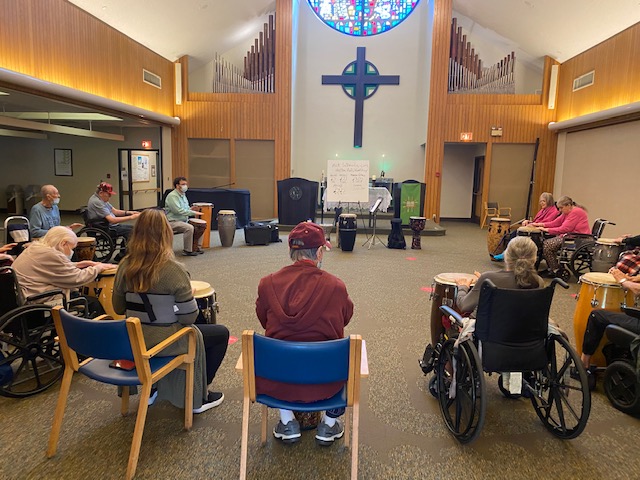
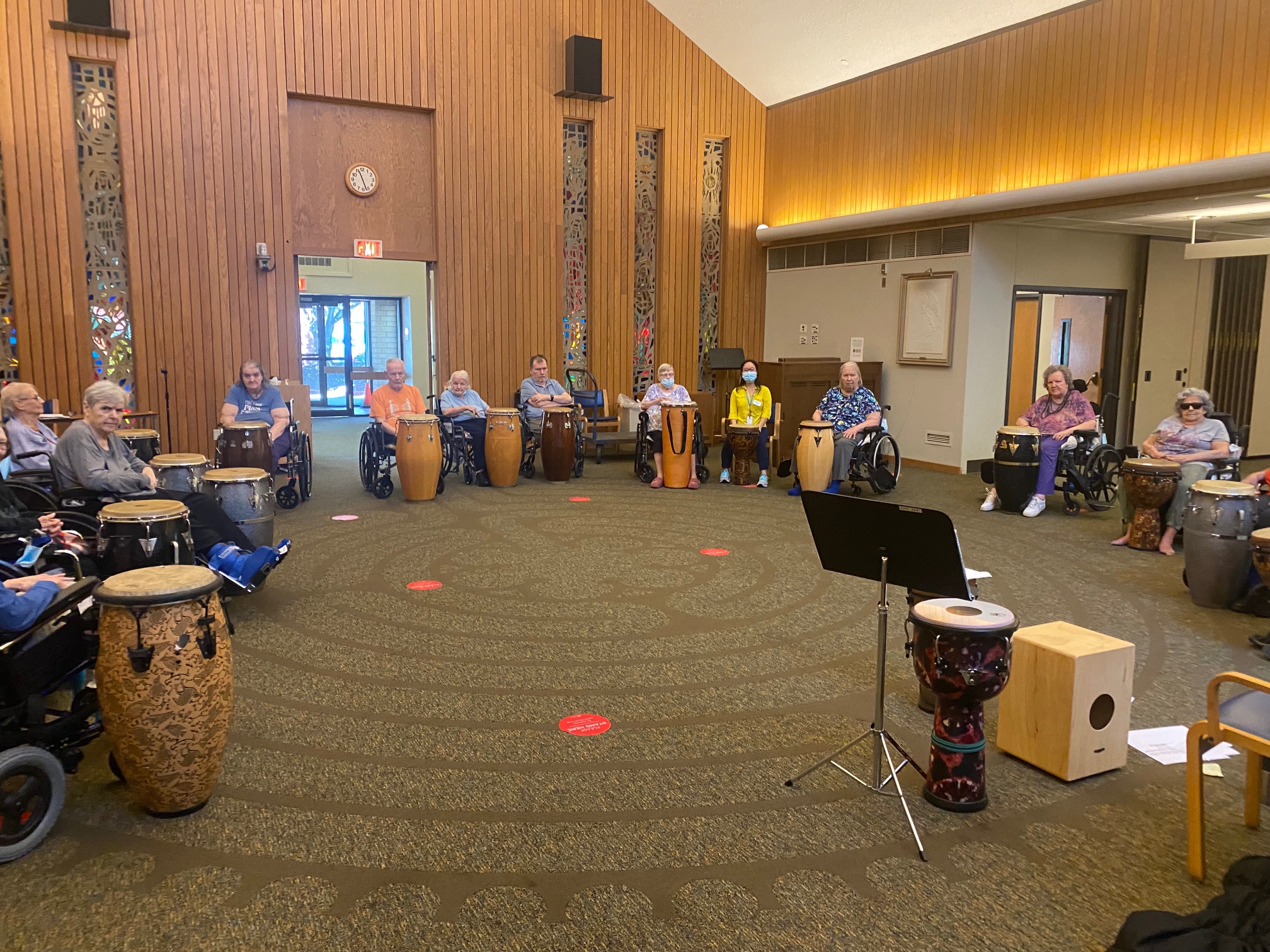
Sharpless 129 is an H-alpha emission nebula commonly called the Flying Bat Nebula located in Cepheus very close to the famous IC 1396 (the nebula that contains the Elephant’s Trunk). The large blue/green nebula inside it, which is over a degree long, is formally known as Ou4 but is colloquially called the Squid (or Giant Squid) Nebula. Ou4 is remarkable for having been discovered very recently, in 2011, by amateur astronomer Nicolas Outters (hence the “Ou” in “Ou4”). It was originally called a planetary nebula but is now thought to be some kind of bipolar outflow from the bright blue star at its center (which is HR 8119).
Both Sharpless 129 and Ou4 take up a lot of sky so a large field of view is necessary to capture them. This image was captured with an Atik 460ex camera attached to a Borg 60ED f/4 refractor with a focal length of 240mm. This is a 10-hour image consisting of 5 hours of H-alpha, 4 hours of O-III binned 2×2, and 1 hour of RGB. At 60mm of aperture this may be the smallest scope ever used to capture Ou4 (which is extremely faint).
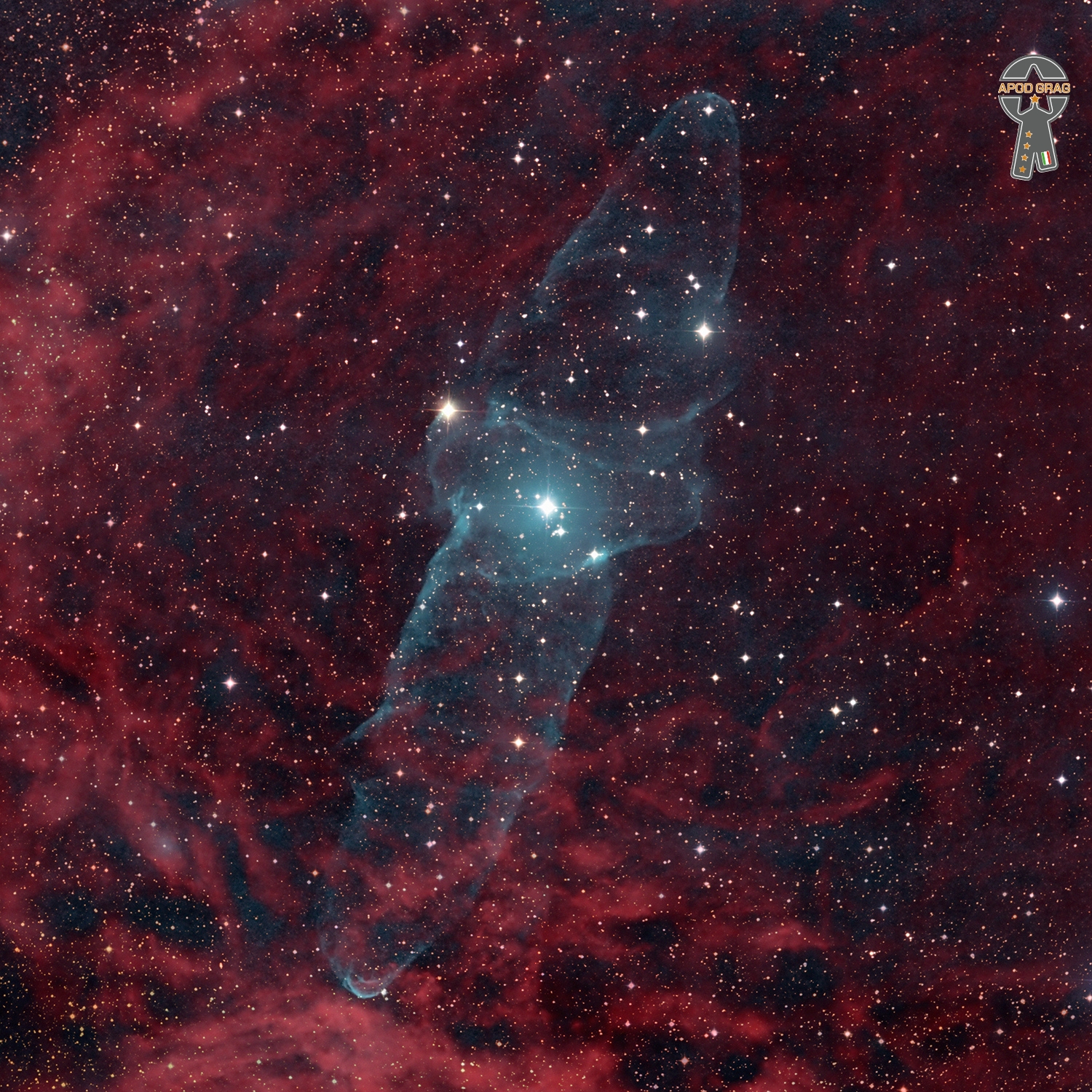
David Freiberg (pronounced FRY-BERG) (born August 24, 1938) is an American musician best known for contributing vocals, keyboards, electric bass, rhythm guitar, viola and percussion as a member of Quicksilver Messenger Service, Jefferson Airplane, and Jefferson Starship. Among other tracks, he co-wrote “Jane,” a hit for Jefferson Starship.
Classically trained in violin and viola, Freiberg began his career moonlighting as a coffeehouse singer-songwriter (playing acoustic guitar) during the American folk music revival while working for a railroad. For a while, he shared a house in Venice, California with David Crosby and Paul Kantner before being briefly jailed for marijuana possession. Prior to being incarcerated, he also became acquainted with Dino Valenti, then Crosby’s nominal roommate on a houseboat in Sausalito, California. During his time as a coffee house folk singer, he was part of the duo David & Michaela. David & Michaela made a demo at CBS studios, and “Elektraproducer Paul Rothchild proposed fitting them into a bigger folk group. But the onset of the Beatles spelled the end of David & Michaela, and incentive for Freiberg to switch to rock and electric instruments.
more...Reggie Watkins – August 24t 1971 Born and raised in Wheeling WV and a long time Pittsburgh resident the trombonist, pianist, arranger and composer has released three recordings as leader and has been featured on many others. From 1999 to 2006 he served as trombonist and musical director for trumpeter and band leader Maynard Ferguson and later with Jason Mraz from 2008 to 2013. In 2003 Watkins was chosen as a semi-finalist in the “Thelonious Monk International Jazz Competition.” Watkins has performed and recorded with many great artists from various genres including Aretha Franklin, Dave Matthews, Dianne Shuur, Jose Feliciano, Willie Nelson, Arturo Sandoval, Trombone Shorty, The Temptations and The O’Jays. Currently, in addition to leading his own group that performs mainly Watkins’ original music, he is also a member of the Grammy nominated Orrin Evans’ Captain Black Big Band, The Pittsburgh Jazz Orchestra, Scott Bradley’s Postmodern Jukebox and a founding member of The Keystone Jazz Collective and Steeltown Horns.
more...Oteil Burbridge is an American multi-instrumentalist, specializing on the bass guitar, trained in playing jazz and classical music from an early age. He has achieved fame primarily on bass guitar during the resurgence of the Allman Brothers Band from 1997 through 2014, and as a founding member of the band Dead & Company. Burbridge was also a founding member of The Aquarium Rescue Unit and Tedeschi Trucks Band, with whom his brother Kofi Burbridge was the keyboardist and flautist. He has worked with other musicians including Bruce Hampton, Trey Anastasio, Page McConnell, Bill Kreutzmann and Derek Trucks.
Burbridge has been recognized for his ability to incorporate scat-singing into his improvised bass solos. Burbridge endorses Fodera, Modulus, Sukop and Dunlopguitars and effects. Burbridge was born and raised in Washington, D.C., to an African American family with some Egyptian heritage. His name, Oteil, means “explorer” or “wanderer”. When he and elder sibling Kofi showed talent for music, their mother encouraged them with classical and jazz courses hoping to nurture their musical inclinations and keep them out of trouble. Kofi remembers Oteil’s first drum set: a Quaker Oatmeal box, when he was only three or four years old. Both brothers were introduced to a wide variety of instruments, and became multi-instrumentalists, with both being taught to play the piano. Oteil gained proficiency on the bass clarinet, violin, and trumpet; however, bass guitar and drums became his instruments of choice (while Kofi developed a love for both flute and keyboards).
more...Claude Driskett Hopkins (August 24, 1903 – February 19, 1984) was an American jazz stride pianist and bandleader.
Claude Hopkins was born in Alexandria, Virginia, United States. Historians differ in respect of the actual date of his birth. His parents were on the faculty of Howard University. A talented stride piano player and arranger, he left home at the age of 21 to become a sideman with the Wilbur Sweatman Orchestra, but stayed less than a year. In 1925, he left for Europe as the musical director of The Revue Negre which starred Josephine Baker with Sidney Bechet in the band.
He returned to the US in 1927 where, based in Washington D.C., he toured the TOBA circuit with The Ginger Snaps Revue before heading once again for New York City where he took over the band of Charlie Skeets. At this time (1932–36), he led a Harlem band employing jazz musicians such as Edmond Hall, Jabbo Smith and Vic Dickenson (although his records were arranged to feature his piano more than his band). This was his most successful period, with long residencies at the Savoy and Roseland ballrooms and at the Cotton Club. In 1937, he took his band on the road with a great deal of success.
The high-pitched vocals of Orlando Roberson (Orlando Herbert Roberson 1909–1977) were a feature of the band’s work. It included Ovie Alston, Fernando Arbello, Shirley Clay, Vic Dickenson, Edmond Hall, Arville Harris, Pete Jacobs, Sylvester Lewis, Ben Smith, and Jabbo Smith.
more...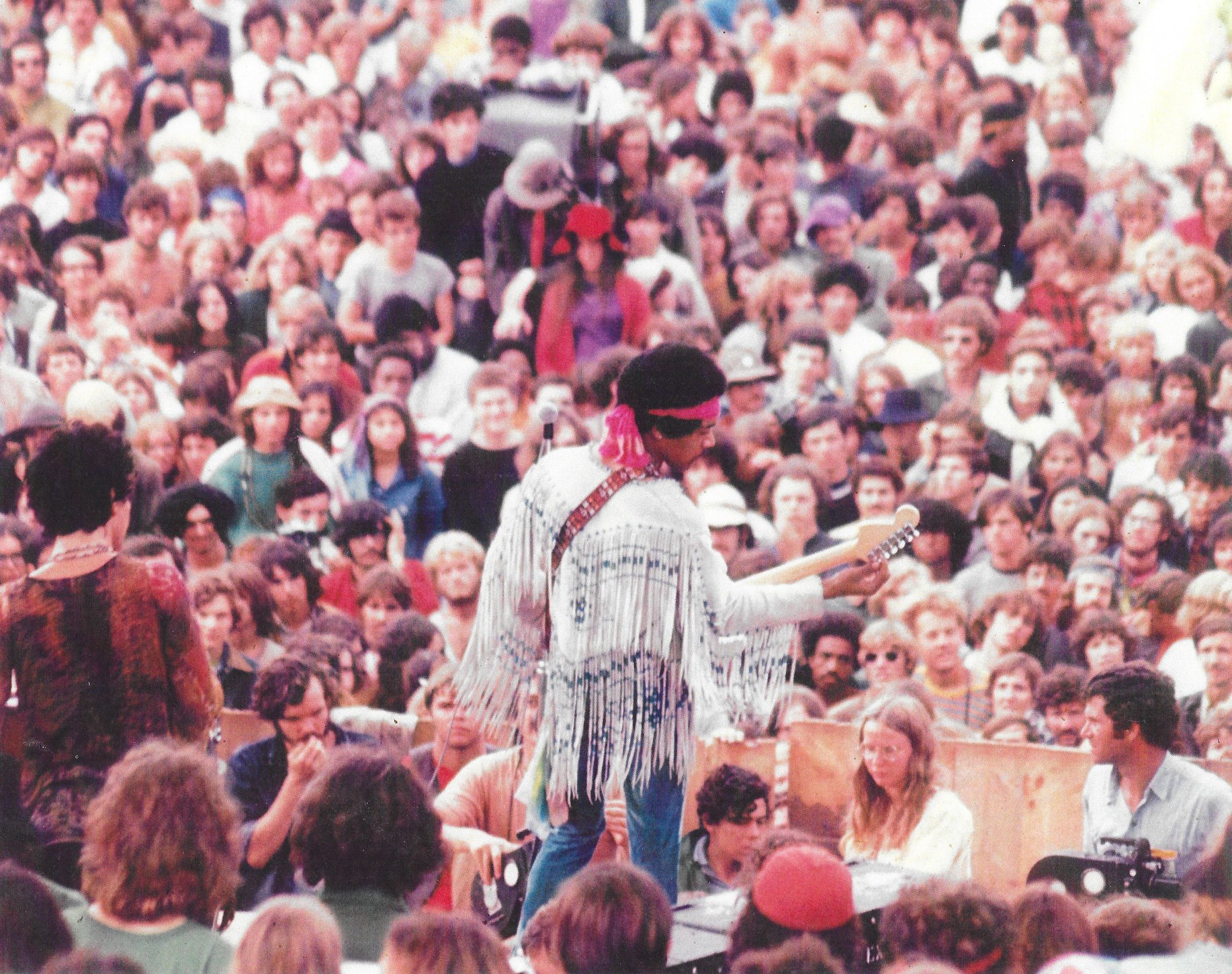

The Eagle Nebula (catalogued as Messier 16 or M16, and as NGC 6611, and also known as the Star Queen Nebula) is a young open clusterof stars in the constellation Serpens, discovered by Jean-Philippe de Cheseaux in 1745–46. Both the “Eagle” and the “Star Queen” refer to visual impressions of the dark silhouette near the center of the nebula, an area made famous as the “Pillars of Creation” imaged by the Hubble Space Telescope. The nebula contains several active star-forming gas and dust regions, including the aforementioned Pillars of Creation. The Eagle Nebula lies in the Sagittarius Arm of the Milky Way.
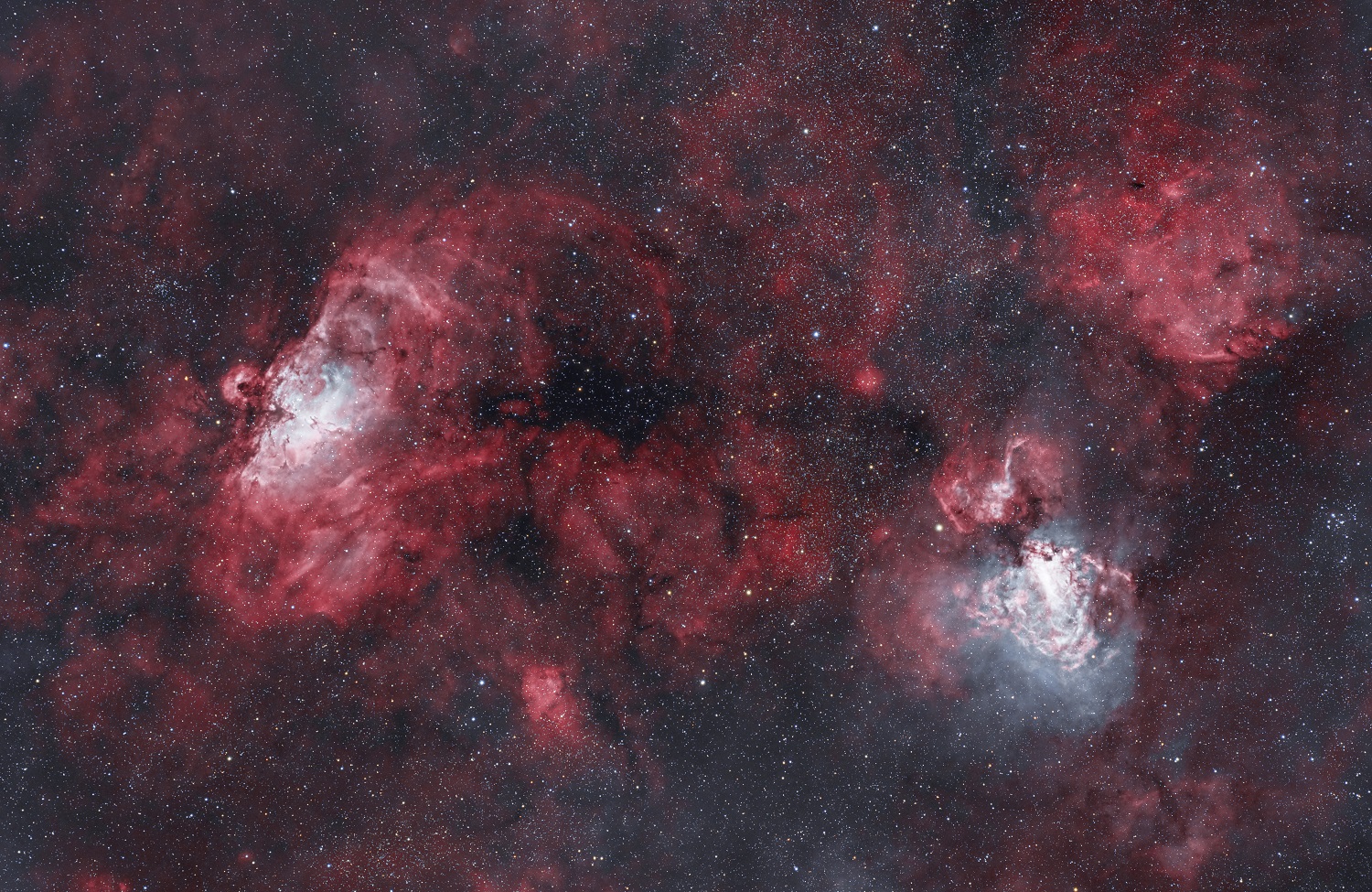
Keith John Moon (23 August 1946 – 7 September 1978) was an English drummer for the rock band the Who. He was noted for his unique style of playing and his eccentric, often self-destructive behaviour and addiction to drugs and alcohol.
Moon grew up in Alperton, a suburb of Wembley, in Middlesex, and took up the drums during the early 1960s. After playing with a local band, the Beachcombers, he joined the Who in 1964 before they recorded their first single. Moon was recognised for his drumming style, which emphasised tom-toms, cymbal crashes, and drum fills. Throughout Moon’s tenure with the Who, his drum kit steadily grew in size, and (along with Ginger Baker) he has been credited as one of the earliest rock drummers to regularly employ double bass drums in his setup. Moon occasionally collaborated with other musicians and later appeared in films, but considered playing in the Who his primary occupation, and remained a member of the band until his death. In addition to his talent as a drummer, Moon developed a reputation for smashing his kit on stage and destroying hotel rooms on tour. He was fascinated with blowing up toilets with cherry bombs or dynamite, and destroying television sets. Moon enjoyed touring and socialising, and became bored and restless when the Who were inactive. His 21st birthday party in Flint, Michigan, has been cited as a notorious example of decadent behaviour by rock groups.
Moon suffered a number of setbacks during the 1970s, most notably the accidental death of chauffeur Neil Boland and the breakdown of his marriage. He became addicted to alcohol, particularly brandy and champagne, and acquired a reputation for decadence and dark humour; his nickname was “Moon the Loon”. After moving to Los Angeles with personal assistant Peter “Dougal” Butler during the mid-1970s, Moon recorded his only solo album, the poorly received Two Sides of the Moon. While touring with the Who, on several occasions he passed out on stage and was hospitalised. By the time of their final tour with him in 1976, and particularly during production of The Kids Are Alright and Who Are You, the drummer’s deterioration was evident. Moon moved back to London in 1978, dying in September of that year from an overdose of Heminevrin, a drug intended to treat or prevent symptoms of alcohol withdrawal.
Moon’s drumming continues to be praised by critics and musicians. He was posthumously inducted into the Modern Drummer Hall of Fame in 1982, becoming the second rock drummer to be chosen, and in 2011, Moon was voted the second-greatest drummer in history by a Rolling Stone readers’ poll. Moon was inducted into the Rock and Roll Hall of Fame in 1990 as a member of the Who.
more...Terje Rypdal (born 23 August 1947) is a Norwegian guitarist and composer. He has been an important member in the Norwegian jazz community, and has also given show concerts with guitarists Ronni Le Tekrø and Mads Eriksen as “N3”.
Rypdal was born in Oslo, Norway, the son of a composer and orchestra leader. He studied classical piano and trumpet as a child, and then taught himself to play guitar as he entered his teens. Starting out as a Hank Marvin-influenced rock guitarist with The Vanguards, Rypdal turned towards jazz in 1968 and joined Jan Garbarek‘s group and later George Russell‘s sextet and orchestra. An important step towards international attention was his participation in the free jazz festival in Baden-Baden, Germany, in 1969, where he was part of a band led by Lester Bowie. During his musical studies at Oslo university and conservatory, he led the orchestra of the Norwegian version of the musical Hair. He has often been recorded on the ECM record label, both jazz-oriented material and classical compositions (some of which do not feature Rypdal’s guitar).
His compositions “Last Nite” and “Mystery Man” were featured in the Michael Mann film Heat, and included on the soundtrack of the same name.
more...Gilbert Lloyd “Gil” Coggins (August 23, 1924 – February 15, 2004) was an American jazz pianist.
Coggins was born to parents of West Indian heritage. His mother was a pianist and had her son start on piano from an early age. He attended school in New York City and Barbados. In Harlem, New York City, he attended The High School of Music & Art.
In 1946, Coggins met Miles Davis while stationed at Jefferson Barracks in Missouri. After his discharge he began playing piano professionally, working with Davis on several of his Blue Note and Prestige releases. Coggins also recorded with John Coltrane, Sonny Rollins, Lester Young, Art Blakey‘s Jazz Messengers, Ray Draper, and Jackie McLean.
Coggins gave up playing jazz professionally in 1954 and took up a career in real estate, playing music only occasionally. He did not record as a leader until 1990, when Interplay Records released Gil’s Mood. He continued performing through the 1990s and 2000s until 2004, when he died from complications sustained in a car crash eight months earlier in Forest Hills, New York. Better Late Than Never, his second album recorded as a leader, was released posthumously.
more...https://www.youtube.com/watch?v=CSQHlsgSkio
more...The galaxy featured in this Picture of the Week has a shape unlike many of the galaxies familiar to Hubble. Its thousands of bright stars evoke a spiral galaxy, but it lacks the characteristic ‘winding’ structure. The shining red blossoms stand out as well, twisted by clouds of dust — these are the locations of intense star formation. Yet it also radiates a diffuse glow, much like an elliptical galaxy and its core of older, redder stars. This galactic marvel is known to astronomers as NGC 1156. NGC 1156 is located around 25 million light-years from Earth, in the constellation Aries. It has a variety of different features that are of interest to astronomers. A dwarf irregular galaxy, it’s also classified as isolated, meaning no other galaxies are nearby enough to influence its odd shape and continuing star formation. The extreme energy of freshly formed young stars gives colour to the galaxy, against the red glow of ionised hydrogen gas, while its centre is densely-packed with older generations of stars. Hubble has captured NGC 1156 before — this new image features data from a galactic gap-filling programme simply titled “Every Known Nearby Galaxy”. Astronomers noticed that only three quarters of the galaxies within just over 30 million light-years of Earth had been observed by Hubble in sufficient detail to study the makeup of the stars within them. They proposed that in between larger projects, Hubble could take snapshots of the remaining quarter — including NGC 1156. Gap-filling programmes like this one ensure that the best use is made of Hubble’s valuable observing time.
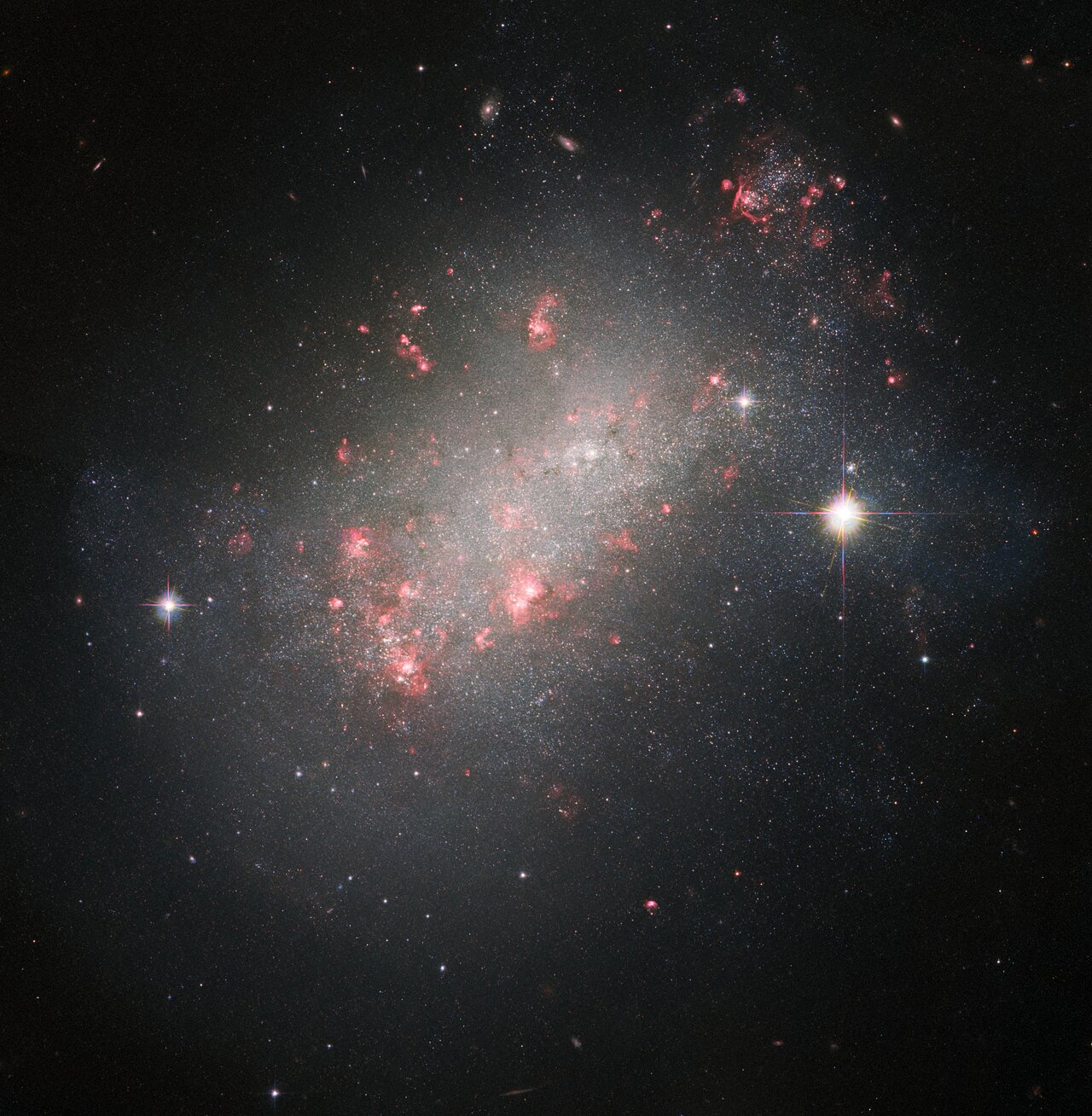
Donna Jean Thatcher Godchaux-MacKay (born August 22, 1947) is an American singer, best known for having been a member of the Grateful Dead from 1972 until 1979.
Donna Jean Thatcher was born in Florence, Alabama. Prior to 1970, she had worked as a session singer in Muscle Shoals, Alabama, eventually singing with a group called Southern Comfort and appearing as a backup singer on at least two #1 hit songs: “When a Man Loves a Woman” by Percy Sledge in 1966 and “Suspicious Minds” by Elvis Presley in 1969. Her vocals were featured on other classic recordings by Boz Scaggs and Duane Allman, Cher, Joe Tex, Neil Diamondand many others. She then moved to California and met future fellow Grateful Dead member Keith Godchaux, whom she married in 1970.
Donna introduced Keith to Jerry Garcia after Garcia’s performance at San Francisco’s Keystone Korner in September 1971. At the time, Donna Jean was not working as a musician. She joined the band shortly afterwards, remaining a member until February 1979.
more...Lex Humphries (August 22, 1936 – July 11, 1994) was an American jazz drummer. He worked with two musicians known for mixing world music with jazz: Sun Raand Yusef Lateef. As a member of Sun Ra’s “Arkestra” he appeared in the film Space Is the Place.
Humphries played on the Giant Steps sessions with John Coltrane. The renditions he and Cedar Walton recorded with Coltrane were released as alternative tracks in 1974. He was also the first drummer in the Jazztet, appearing on their first album, Meet the Jazztet, in 1960.
He died in Philadelphia in 1994, aged 57. The cause of death was undisclosed, but according to fellow drummer Mickey Roker, he was distraught in his later years due to marital problems and being separated from his son.
more...More Posts
- Albert Ayler
- Pete Escovedo
- Leroy Vinnegar
- World Music Angelique Kidjo
- World Music Johnny Clarke
- Into the Woods by Theatre 55
- Cosmos Jones-Emberson 1
- Christine McVie
- Big John Patton
- Paul Gonsalves
- Will Bradley
- Flamenco Fridays Ezequiel Benítez y Paco León
- Daily Roots King Tubby
- Cosmos NGC 4725
- Thurston Harris
- Michael Rose
- Terry Garthwaite
- World Music Fred Soul & Zé Luis Nascimento
- Daily Roots Scientist
- Cosmos Sagittarius Triplet
